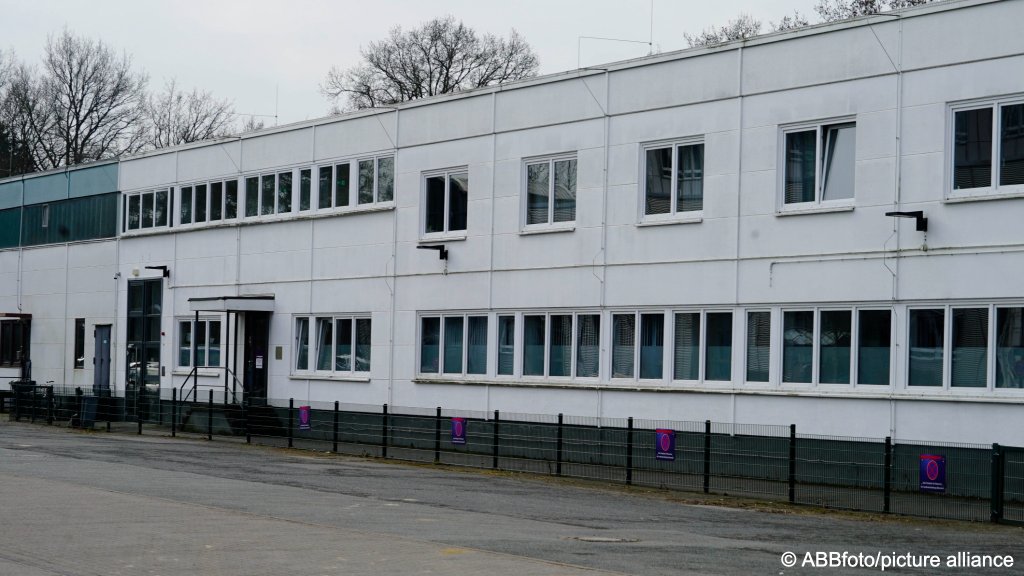According to official figures, only a few migrants have been returned from special return facilities in Germany to other EU countries responsible for processing their asylum claims. Under the EU's so-called Dublin regulation, the country of first arrival is typically responsible for assessing an application for asylum — a policy that Germany's new government had said it would enforce far more meticulously.
Germany remains a top destination for many refugees and migrants who come to Europe in hope of better opportunities. However, under EU law, they are obliged to file their asylum in the country of first arrival, which often means countries located along the bloc's external borders, such as Italy and Greece.
If authorities in Germany come to learn that, under these rules, another member state is indeed responsible for processing an asylum claim, they have to return the individual to that place.
This rule is particularly valid for the first six months that the person is in the EU. However, the bureaucratic processes involved in making such transfers happen are complicated and can be prone to mistakes.
When an asylum claim is processed, EU countries use the Eurodac centralized biometric database, where they collect, store and compare the fingerprints of asylum seekers across the bloc.
That system, however, has also come under fire for being somewhat unreliable.

Hiding from Dublin regulation
In March this year, Germany's former government opened two dedicated Dublin returns centers in the north and the east of the country, intended to house people who are slated to be deported to another EU state to have their claims assessed there.
But to date, only five migrants have been sent to the center in Eisenhüttenstadt outside Berlin in east Germany.
According to the Interior Ministry of the state of Brandenburg, which oversees operations at the facility, they have since been returned to the country of their first entrance, which in this case was Poland.
In total, 72 people have been housed in Eisenhüttenstadt so far, the ministry added, with the majority of them -- 42 -- absconding from the facility and going into hiding or having been taken in by a local church parish as part of what is known as church asylum.
Though this is technically illegal, these ways of avoiding deportation are legitimate ways in the eyes of the law to allow people to eventually have to responsibility of having their asylum assessed transferred to German authorities — typically if they manage to stay in Germany for six months.
However, if they are caught during this period of hiding, they can — and have — been returned to other EU countries as per the Dublin regulation.
Read AlsoGermany: Church asylum on the rise amid mounting deportation pressure
Only 75 people see inside of Hamburg facility in six months
Meanwhile, only a total 38 people have been deported to other EU states from the new facility in Hamburg in north Germany.
That center says it has housed only a total of 75 migrants since opening its doors in March, according to local authorities in Hamburg, leaving its track record six months into its existence almost negligible.
Former German Interior Minister Nancy Faeser had announced that the two facilities would ensure "fast and efficient procedures" in sending back asylum seekers in Dublin cases.
"This will enable us to significantly increase the number of transfers to the responsible EU countries -- and further relieve the burden on the states and municipalities," she had explained in February.
Read AlsoGermany: Asylum applications drop significantly, but problems continue with returns
Border security to blame?
Dublin cases have also come under greater scrutiny all along Germany's borders, which have seen increased checks since the new government took over in May.
Under Dublin rules, German officials may not reject asylum seekers at the border and are supposed to take them in to clarify which country is responsible for their claim.
However, German Interior Minister Alexander Dobrindt has nevertheless ordered police placed along the borders to turn back any asylum seekers they might intercept.
Critics say this violates EU law, however, Dobrindt has argued that since Germany is only surrounded by safe countries, which almost all are EU members, no one would need to make their way all the way to Germany to obtain safety from persecution.
About 500 people approaching Germany's borders have been stopped from entering since May, which the Brandenburg Interior Ministry cited as one of the reasons why its return cases remain low.
"(T)he rejections at the border mean that hardly any people with a Eurodac hit are forwarded from Poland to the Dublin Centre," a spokesman from the Brandenburg Interior Ministry, who deals with the Eisenhüttenstadt facility, told the daily Die Welt newspaper.
Read AlsoGermany considers border checks a 'success' despite low rate of asylum rejections
with AFP, dpa
